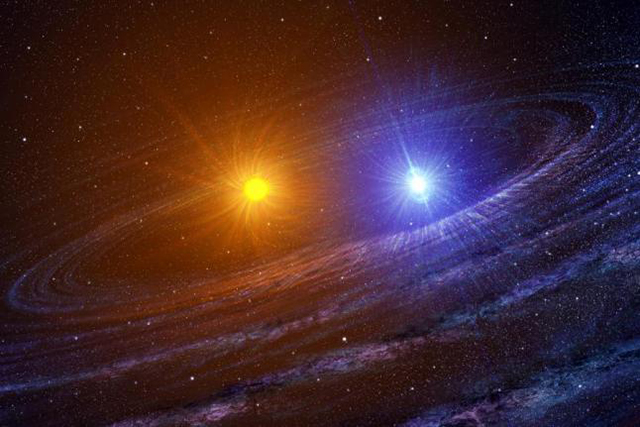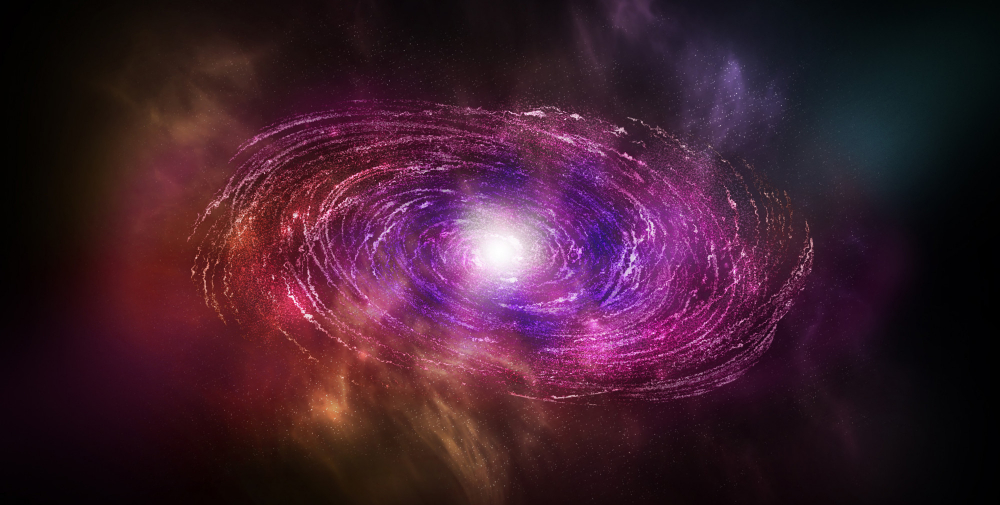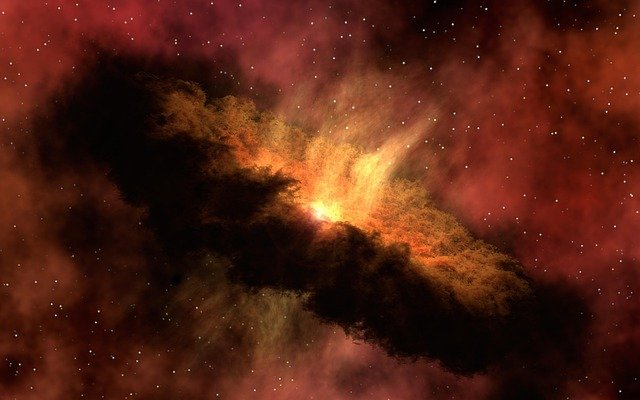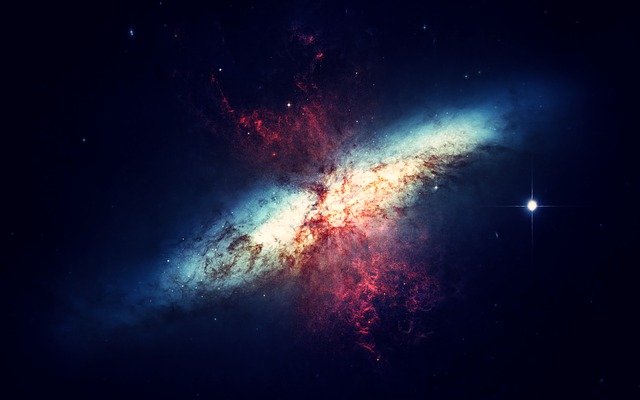*This post may contain affiliate links. This means we may make a commission if you purchase an item using one of our links*
Stars are known to collide with each other from time to time, especially in our galaxies’ dense central regions. A black hole likely resides at the center of every galaxy, around which vast clusters of stars rotate. Star collisions are most likely to occur in these regions.
Sometimes stars will collide slowly, which results in the two stars merging into one. Scientists call these stars ‘blue stragglers.’ These ‘blue stragglers’ are easier to identify because of their greater brightness and hotness relative to the other stars in the cluster.
Sometimes, and with greater rarity, stars collide at high speeds. These impacts are far more destructive. Instead of simply ‘merging,’ they produce an explosion, spreading pieces of each star (mainly hydrogen) throughout space.
What Happens When Stars Collide?
Table of Contents
What happens when one star collides with another depends mainly on the types of stars that are colliding. There are many star types, and they each have a unique radius, mass, and temperature. Each will react a little differently than any of the others when coming together.
When white dwarf stars are part of a binary system (two stars orbiting each other) and collide with another star of any kind, a ‘type one-A supernova’ occurs.
In this type of collision, gas is stripped from the larger star and forms an accretion disk surrounding the white dwarf. Eventually, a critical mass is reached in the white dwarf, and it explodes, ejecting what’s left of the companion star into space.
Another merger process that is similar to the type one-A supernova is called a neutron star merger. This involves two neutron stars orbiting closely together due to gravitational radiation. Over time, they merge and either form a more massive neutron star or black hole. Many scientists believe this phenomenon is responsible for the short gamma-ray bursts detected by satellites since the 1960s.
Red giants can sometimes collide with neutron stars creating a strange hybrid star called a Thorne-Żytkow object. In this instance, which usually only happens in the crowded environments of globular clusters, the red giant or supergiant essentially digests the neutron star. The result is a red giant surrounding a neutron star core. These objects are so far only hypothetical.
The last of the main kinds of star collisions and mergers is the merger of binary stars. These are sometimes called contact binary systems.
Binary systems are widespread, but some pairs are more stable than others. Stable binary stars can share an atmosphere and orbit each other closely in a peanut-like shape. Other binary pairs will be unstable and will eventually collide with each other.
Do Stars Form a Binary Star System Before Collision?

Scientists are learning more and more every year about how stars interact with one another and under what conditions they merge, collide, or come into a stable relationship. There is little conclusive evidence to support many of the theories of star mergers, and observing mergers in action is a difficult task.
Most stars merge or collide because they have formed a gravitational bond first. This means that binary systems are the vehicle through which most mergers and collisions occur. Some of these binary pairs start very far away, and through a process of erratic orbits, become progressively closer until contact binaries form.
Are Quasars and Blackholes Formed Due to Collisions?

The early universe was a violent place. Back then, the cosmos was much smaller, and galaxies were likely closer together. Occasionally these galaxies would merge, and not just the stars, but the black holes at their centers too. These mergings would create even larger black holes.
Quasars are enormous galaxies containing enormous black holes at their centers, and they radiate a tremendous amount of power. Much of that power appears to have been collected through the process of merging galaxies and other intergalactic objects.
In fact, scientists speculate that our own Milky Way will merge with the Andromeda Galaxy sometime in the next 3 to 5-billion years. This will likely result in the creation of a quasar and is a process that may already have started.
The densest objects in the known universe are black holes, and learning how they form is one of the great mysteries of science. One theory is that they are created by the merging of two neutron stars.
Like a black hole, neutron stars are incredibly compressed. At just a few kilometers wide, the neutron star contains the mass of one and a half of our suns.
If two of these stars merge, the compression becomes far greater and brings the remnants of the merger to the brink of collapse. We cannot directly observe these objects because light cannot escape a black hole. Nonetheless, the current theory states that neutron stars will collapse into a black hole under certain conditions.
How Often Do Stars Collide?

Current estimates suggest that about once every 10,000 years or so, two stars will collide somewhere in our galaxy, usually in a place with a high density of stars. As we saw, these areas are known as globular clusters.
There are about 150 of these globular clusters scattered throughout the Milky Way and many hundreds more in other, larger galaxies. The first known detection of such a collision was in 2008 with a merger in the Scorpius constellation.
But the universe is incalculably large, and many scientists now think there is a near-constant rate of star mergers, with one scientist stating that there are likely many hundreds of mergers per hour throughout the universe.
Since 2013, scientists have monitored a binary system known as KIC 9832227. This star pair not only orbit each other but also share an atmosphere, and their orbits have continually decreased since monitoring began. These scientists predict that the stars will merge and explode sometime in 2022 and that this event will be visible from earth.
Conclusion
The image of two stars colliding is not a reassuring one to our terrestrial imagination, but it has fascinated scientists for many years. Initially thought to be a relatively rare phenomenon, we now understand that mergers and collisions likely occur with some frequency in our galaxy and others.
Check This Article Out If You Want To Know About Some Celestial Entities In Our Solar System That Could Potentially Harbour Life
References
https://astronomy.com/magazine/ask-astro/2020/05/what-would-happen-if-two-stars-collided
https://science.nasa.gov/astrophysics/focus-areas/black-holes
https://en.wikipedia.org/wiki/Globular_cluster
https://en.wikipedia.org/wiki/V1309_Scorpii
https://archive.nytimes.com/www.nytimes.com/library/national/science/061300sci-stars-collisions.html
https://en.wikipedia.org/wiki/Type_Ia_supernova
https://www.sciencemag.org/news/2017/10/merging-neutron-stars-generate-gravitational-waves-and-celestial-light-show
Black Hole or No Black Hole: Astrophysics of Neutron Star Collisions
https://iopscience.iop.org/article/10.1088/0004-637X/782/2/60

